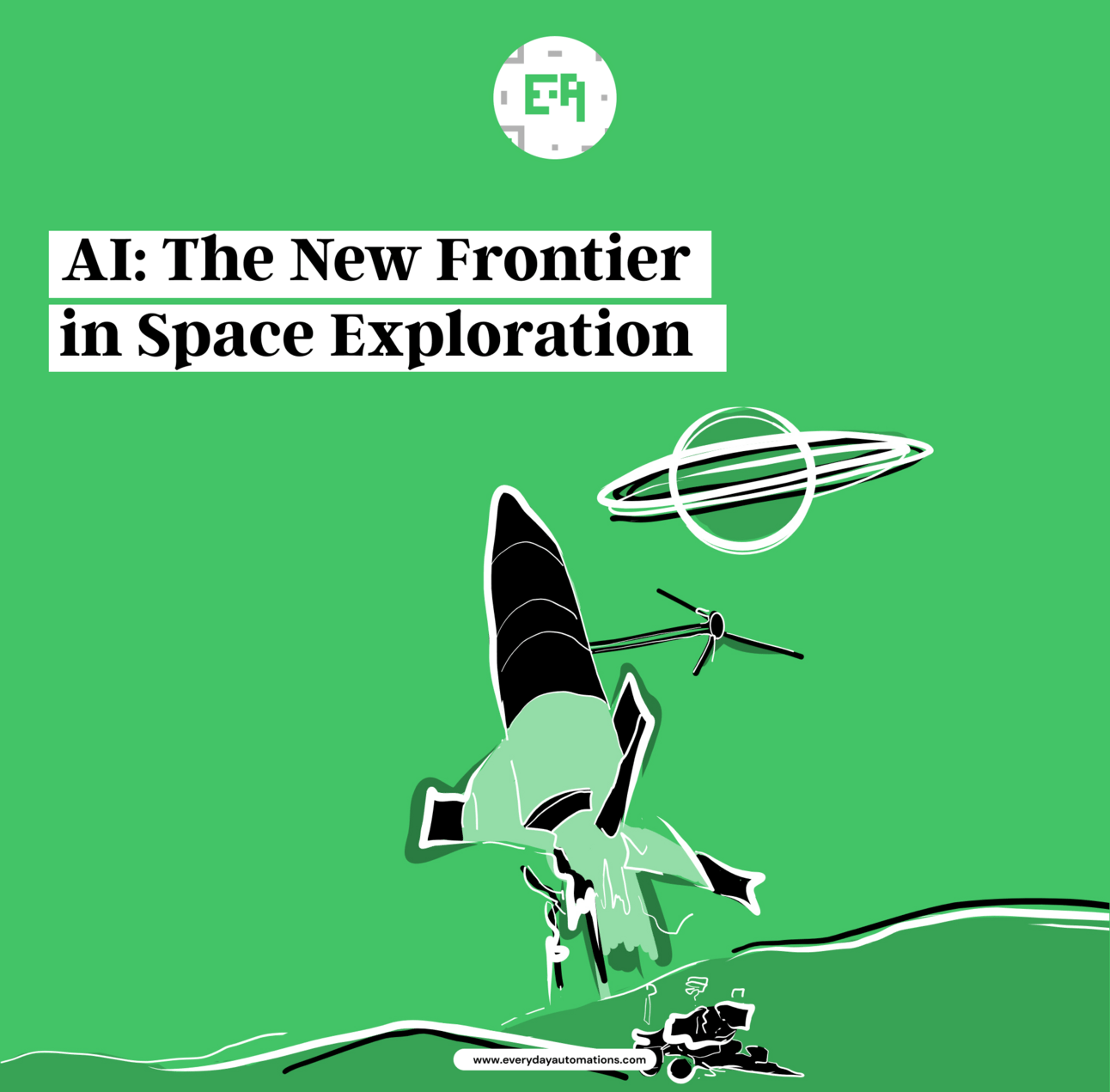- Everyday Automations
- Posts
- AI: The New Frontier in Space Exploration
AI: The New Frontier in Space Exploration
Exploring the Cosmos with AI: Navigating the Uncharted Realms of Space with Cutting-Edge Technology

Space, the final frontier, has always captured human imagination. Today, as we stand at the crossroads of technological advancements, Artificial Intelligence (AI) and automation play pivotal roles in unraveling the mysteries of the cosmos. This blog post delves into how AI and automation revolutionize space exploration, from steering autonomous spacecraft to decoding the secrets of distant planets and stars.
Steering the Course: Autonomous Spacecraft
One of the most significant contributions of AI in space exploration is in the development of autonomous spacecraft. These advanced machines, equipped with AI systems, can make decisions without human intervention, crucial for exploring far-flung space areas where the delay in communication with Earth is impractical for real-time navigation. NASA's Perseverance rover, which landed on Mars in 2021, is a prime example. It uses AI to navigate the Martian terrain safely, avoiding obstacles and selecting optimal paths autonomously. This autonomy is not just about moving around; it extends to capturing and analyzing data, deciding what to study further, and even managing spacecraft health.
Decoding Cosmic Mysteries: AI in Data Analysis
The amount of data collected from space missions is colossal and often overwhelming for human analysis. AI comes to the rescue here. Machine learning algorithms are adept at sifting through vast datasets, identifying patterns and anomalies that might elude human researchers. For instance, AI has been instrumental in discovering new exoplanets. NASA’s Kepler Space Telescope, along with AI algorithms, has identified numerous planets outside our solar system by analyzing subtle changes in starlight. This synergy of AI and astronomy is opening new doors in our understanding of the universe.
Predictive Maintenance: Keeping Missions on Track
AI-driven predictive maintenance is another area revolutionizing space missions. Spacecrafts are equipped with sensors that collect various data points. AI algorithms analyze this data to predict potential failures before they occur, enabling timely maintenance and reducing the risk of mission failure. This approach was crucial in the Hubble Space Telescope’s operations, where predictive analytics helped in proactive maintenance, significantly extending its operational life.
AI and Deep Space Communication
Communication is a major challenge in deep space missions. AI is improving the efficiency and reliability of deep-space communication networks. AI algorithms can optimize data transmission schedules, compress data for efficient transmission, and even adapt to changing space weather conditions to maintain communication integrity.
Challenges and Future Prospects
Despite these advancements, AI in space exploration is not without challenges. AI systems need to be incredibly reliable and capable of functioning in the harsh conditions of space. Moreover, ethical considerations around autonomous decision-making in AI systems must be addressed, especially in scenarios involving potential extraterrestrial contact.
Looking ahead, AI is poised to play an even more significant role in space exploration. Future missions might see AI-driven robots conducting independent explorations, building bases on other planets, or even repairing themselves. The James Webb Space Telescope, with its advanced AI capabilities, is set to delve deeper into the universe's origins, showcasing the immense potential of AI in uncovering the universe’s deepest secrets.
AI and automation are not just tools but partners in our quest to explore space. They augment our capabilities, take on tasks that are beyond human reach, and help us understand the universe in ways we never thought possible. As we continue to advance in our space endeavors, AI stands as a beacon of innovation, guiding us through the vast, uncharted expanses of space.

Reply